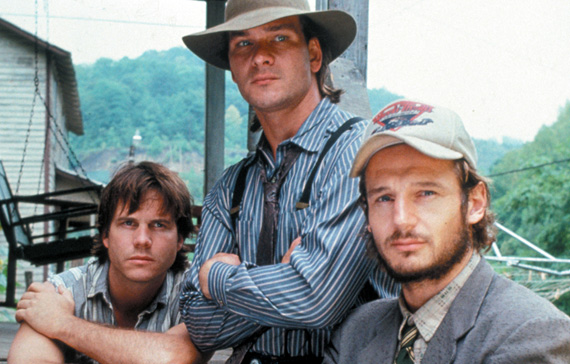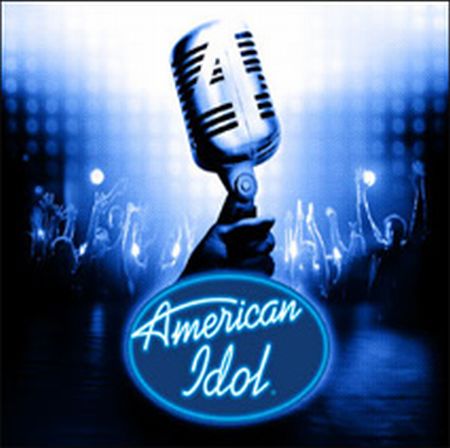The historic bankruptcy of Detroit has municipalities across the nation worried the fate of the
Arsenal of Democracy is on staring them directly in the face.
Philadelphia, the City of Brotherly Love, is at the top of the watch-list for the next America city to succumb to the truism that "demography is destiny." [
Avoiding Detroit's crash Once a boomtown, the Motor City now is a sad warning. But Phila. and others don't have to follow in its path,
Philadelphia Daily News, July 28, 2013]
You can't avoid an economic crash when the people responsible for making a city a 'boomtown' have decided to vacate their metropolis because it is no longer conducive to raising a family and protecting wealth.
In reading
Case Study of a Riot: The Philadelphia Story, by Lenora E. Berson (a story of the black riot of 1964) we are witness to an admission of the Visible Black Hand of Economics from which no city can escape:
In 1950 the Negro population of Philadelphia was 380,000 - 18 percent of the city's. By 1960 the number had jumped to 535,000 or 27 percent. One hundred and seventy-five thousand, or almost one-third, lived in North Central Philadelphia; 22,000 whites lived alongside them. By 1964 more whites had left than had been replaced. Philadelphia had suffered a population decline of a million; North Central Philadelphia's share of the loss was 25,000.
By 1960 the Negroes had completely occupied the last of the old North Philadelphia white neighborhoods. Most of the new residents sought to shape a decent life for themselves and their families under extremely difficult circumstances. Unlike the groups that preceded them, however, they had brought with them few mercantile or entrepreneurial skills, little tradition of family solidarity, scant preparation for academic schooling and little feeling of self or group worth. North Central Philadelphia became an unrelieved community of poor Negroes resting on the commercial infrastructure of the old Jewish quarter. (p. 25-26)
The "Great Society" so many people blame for destroying the black community was years from being implemented; why then, were the black inhabitants of Philadelphia incapable of producing a community where social capital flourished?
Why were the black residents of Philadelphia incapable of producing a community where individual entrepreneurial activity could set in, like frost on a cold fall morning?
Could it be the violence found almost exclusively in the black community, itself caused by (as we are told) poverty and hopelessness?
Mayor Michael Nutter, Philadelphia's current black mayor, has an op-ed in Time, where he discusses black-on-black violence and how his city produces a 'Trayvon Martin' on a daily basis -- though no one cares [
Stopping the Slaughter, Time, July 29, 2013]:
Every death is a tragedy in this nation, whether in Pennsylvania,
Connecticut or Florida. We all have suffered a great tragedy with the
death of Trayvon Martin. But Trayvon's story is only the latest in our
epidemic of violence, compounded by race, that must be addressed in
America.
Why is it that African-American males are so
disproportionately both the victims and the perpetrators of violence,
more often than not against one another? In Philadelphia, where I am
mayor, 75% of our homicide victims are black men. About 80% of the
people we arrest for homicide are black men. Black men across the
country are killing one another, yet that epidemic is rarely part of any
national conversation.
Our priorities are askew. Our leaders talk a lot about international
terrorism. I often talk about domestic terrorists, by which I mean not
foreign nationals plotting violence on these shores but the day-to-day
crime that is even more devastating to our cities than the episodic
threats from overseas. My focus comes from my experiences and the
buildup of living all my life in West Philadelphia and Wynnefield, and
as a city-council member and then later as mayor, attending numerous
funerals and talking to moms and dads who have lost their children and
other loved ones to senseless acts of violence.
What's missing
are the fundamentals. It's about jobs. It's about education. It's about
economic investment and job retraining. It's about getting benefits to
people who need them. We know that in Philadelphia, thousands of people
are not even signing up for the available benefits to take care of
themselves and their families. We know clearly that there are a few
things that work: investing more in Head Start programs, summer jobs and
programs for teens and community-development block grants for cities to
put people to work. Those three areas have been cut significantly over
the past few years.
The U.S. seems to be more invested in nation
building in other countries around the world, Iraq and Afghanistan in
particular, than in nation building--or rebuilding--here at home.
Shouldn't the black inhabitants of a city - after all, they are "Americans" - be capable of building their own communities? Wait, we learned from
Case Study of a Riot that black people in Philadelphia, despite inheriting the abandoned infrastructure left behind by
white flighters, couldn't replicate the same economic conditions of those who preceded them.
They couldn't produce the social capital required to build an economy, though wherever
white flighters landed, they could reproduce it (
even when they engaged in reverse white flight, what some call gentrification, they reproduce it)
For those wondering, the roots of black violence in Philadelphia go back to the 1800s. In
Violent Death in the City: Suicide, Accident, and Murder in Nineteenth-Century Philadelphia by Roger Lane, we learn:
The black population of Philadelphia was never so larges as the Irish, but its experience with homicide was at least as significant. No major group had a higher rate of indictment, as the 147 identifiably black persons indicted between 1839 and 1901 may be computed at 7.5 per 100,000 - itself an understatement - or close to three times the rate for whites.
What makes this rate significant is not merely that it is high, but that is direction and the patterns behind it were, unlike those for the Irish, markedly different than the rest of the population.
While poverty and discrimination pervaded virtually all aspects of life in black neighborhoods, the method of handling of homicide cases in the criminal justice system does not seem in itself to have been an important instrument of oppression. The rate of conviction for a ll identifiable blacks accused of homicide was somewhat higher, 58 percent, than the conviction rate for whites, which was 48 percent. But since the majority of indictments, as with most others, were for killings within the group, what this indicates is that unlike the situation int he South during the same period, black-on-black homicide was treated as a serious matter in Philadelphia. (p. 104)
But Roger Lane doesn't stop there:
The existence of a weapons culture clearly had an impact on many aspects of the habit of violence in general, go back before the beginning of this study; the black homicide rate was already considerably higher than the white in 1839-1845 and remained higher eve in terms of killings without weapons.
But it would seem that to explain this pattern in terms of family or indeed anything internal to the community is to reverse cause and effect. Forced out to the margins of the urban economy, living in or close to the centers of criminal activity, subject to harassment outside of their own neighborhoods and sometimes to invasion, even armed mob invasion, inside of them, many blacks found internal battle-readiness an essential survival mechanism.
What cheap handguns did to this cultural pattern was simply to intensify it, enabling an escalation in the rate of violence directed inside as well as outside of the group. And, what is critically important, there was nothing at work within the black community - unlike the white - to check the upward curve. While homicide rates in the city as a whole were dropping late in the century, the rate among the black community continued to rise, even though that community became larger, more nearly self-contained, and less threatened from without. The rate from 1839-1859, already high at 6.1 per 100,000, grew to 7.2 per 100,000 during the 1860-1880, and to 9.3 during 1881-1901.
Most strikingly this rise during the nineteenth century may be projected ahead into the late twentieth. As demographic change has made Philadelphia an increasingly black city, the black homicide rate in itself is enough to account for the differences between the overall official rates for 1839-190, 1948-1952, and 1972-1974. Indeed the rising black homicide rate has obscured the contrary trend among whites, perhaps the most significant of all comparisons over time. Within the white population over the last two decades, escalating sales of handguns and the flight from the city of the richer, more educated, and less violent have combined to drive up the rates. (p. 112 - 113)
Lane's book notes the black homicide was in Philadelphia in 1839-1901 was 7.5 per 100,000; in 1948-1952, it was 24.6 per 100,000; from 1972-1974, it was 64.2 per 100,000.
Conversely, Lane notes the white homicide in Philly in 1839-1901 was 2.8 per 100,000; in 1948-1952, it was 1.8 per 100,000; from 1972-1974, it was 2.8 per 100,000.
Why doesn't Mayor Nutter acknowledge this in his
Time essay?
The same reason we can't acknowledge the growth in the black population of a city correlates directly to its inevitable decline. Roger Lane wrote another book, carrying the title
William Dorsey's Philadelphia & Ours: On the Past and Future of the Black City in America. In the concluding chapter, Prospects For the Black City, Lane writes:
In city after city, in fact, including Philadelphia, the winning political power typically symbolized by election of the first black mayor has been greeted with high hopes, and followed quickly by disillusion, as the condition of the African-American community has not improved in any comparably dramatic way, and instead, together with the condition of the city itself, has usually continued to slide. It is obvious to any observer with a long view - if not to many white residents - that the deterioration of urban life is far older than the achievement of black power, and due more to fundamental economic change than to the complexion of municipal politics. Philadelphia, typically, reached its peak in terms of both population and manufacturing jobs in the census of 1950, at a time when politics was till int he hands of unreconstructed Republicans; the most cynical way of looking at later developments is simply that white residents, in the course of abandoning it for the suburbs, simply tossed the keys to the city over their shoulders on the way out. (p. 394)
That's not a cynical way to look at it at all.
Philadelphia continues to see its white share of the population plummet, while the black share rises.
And with it, the delicate balance of civilization in a multiracial society slides into the status of disorder, economic collapse, chaos, and near homogeneous state of Detroit in 2013.
Yes Philadelphia, you are on the short-list of seeing a situation like the one Detroit encountered in 2013 happening to you
very, very soon.
And just as in Detroit, it's black political power driving the city over the economic cliff.
But then again, as noted above, black people have been behind the bulk of homicides and economic destabilization in Philadelphia for more than two centuries.









